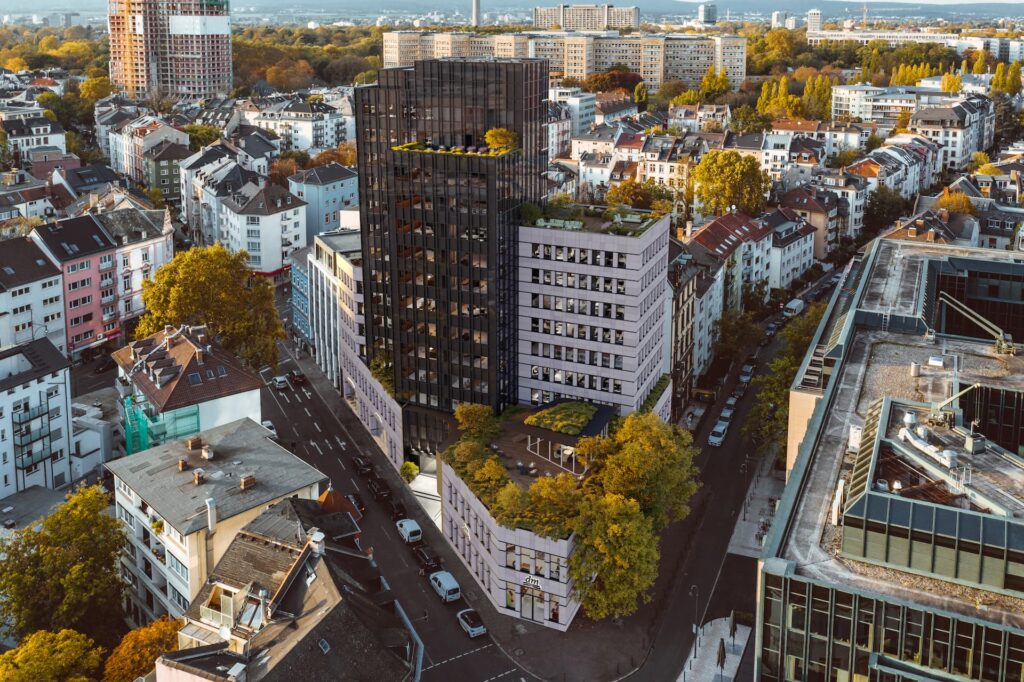Real-Time Collaboration in VR for Architecture Teams
As technology progresses, the world of architecture is also experiencing a transformative shift. One such advancement is the use of Virtual Reality (VR) for real-time collaboration among architecture teams. This breakthrough allows architects from around the globe to virtually gather in a digital space, simultaneously visualizing and manipulating their designs in real-time. Thus, fostering a higher degree of collaboration and communication.
Understanding Real-Time Collaboration in VR
Real-time collaboration in VR is a revolutionary tool that’s changing the game in the architectural industry. But what exactly is it? Let’s delve deeper into this concept, its advantages, and how it’s making waves in the field of architecture.
What is Real-Time Collaboration in VR?
Real-time collaboration in VR is an advanced technology that allows multiple users to interact with a 3D model of their architectural design in a virtual environment, in real-time. This means that architects can now collaborate on design projects, regardless of their geographical location.
The Advantages of VR Collaboration
The benefits of using VR for real-time collaboration are vast. It not only gives architects a more immersive understanding of the design but also eliminates the barriers of distance and time. With VR, architects can experiment with different design elements, spot design flaws early, and make immediate changes. Furthermore, this real-time collaboration enhances team communication, facilitates better decision-making, and ultimately leads to more efficient project execution.
## H2: Advantages of Real-Time Collaboration in VR for Architecture Teams
Streamlined Communication and Design Approval Process
Virtual Reality provides an immersive and interactive platform that allows architects to present their designs in a more comprehensive and detailed manner. With Real-Time Collaboration in VR, architecture teams can walk their clients through the virtual model of the project, making adjustments in real-time based on feedback. This eliminates the need for lengthy email threads and repetitive meetings, significantly reducing the overall project time.
Enhanced Understanding and Decision Making
In traditional 2D blueprints and models, it can be difficult for clients to fully visualize and understand the proposed design. However, with Real-Time Collaboration in VR, clients can explore the virtual model from different perspectives, enhancing their understanding of the design. This immersive experience enables clients to make more informed decisions, reducing the risk of costly changes in later stages of the project.
Increased Efficiency and Productivity
Real-Time Collaboration in VR for Architecture Teams allows for simultaneous review and editing of designs. This means that instead of waiting for one member to finish their part, the team can work together on different aspects of the project simultaneously. This not only speeds up the design process but also fosters a more collaborative and innovative work environment.
Implementing Real-Time Collaboration in VR for Architecture Teams
Choosing the Right VR Hardware
The first step in implementing Real-Time Collaboration in VR for Architecture Teams is choosing the right VR hardware. There are many VR headsets available on the market, with varying levels of quality and price. The choice will largely depend on the specific needs and budget of the team. Some key considerations include the resolution of the headset, its comfort and the ease of setup and use.
Selecting a VR Collaboration Software
The choice of VR collaboration software is crucial for a seamless and productive VR collaboration experience. The software should allow real-time editing and annotation, multi-user collaboration and easy integration with existing design tools. Some of the popular VR collaboration tools for architects include The Wild, IrisVR and Enscape.
Training the Team
While VR technology is becoming increasingly user-friendly, there may still be a learning curve for those who are new to it. Therefore, it’s important to provide adequate training to the team to ensure they can make the most out of the VR collaboration tool. Some VR software providers offer training and support services, which can be very helpful for getting the team up to speed.
Future of Real-Time Collaboration in VR for Architecture Teams
More Integration with AI and AR
As technology continues to evolve, we can expect to see more integration of AI and AR with VR for architecture teams. This would allow for even more immersive and interactive design experiences, with AI providing smart suggestions and AR adding a layer of augmented data to the virtual model.
Broader Adoption Across the Industry
As more architecture firms recognize the benefits of Real-Time Collaboration in VR, it’s likely that we will see broader adoption across the industry. This could revolutionize the way architecture projects are designed and presented, leading to more efficient and successful outcomes.
Development of More Specialized VR Tools
With the increasing demand for VR in architecture, we can expect to see the development of more specialized VR tools tailored to the needs of architects. These tools could offer advanced features like real-time physics simulation, climate analysis, and more, taking VR collaboration to the next level.## H2: Advantages of Real-Time Collaboration in VR for Architecture Teams
Streamlined Communication and Design Approval Process
Virtual Reality provides an immersive and interactive platform that allows architects to present their designs in a more comprehensive and detailed manner. With Real-Time Collaboration in VR, architecture teams can walk their clients through the virtual model of the project, making adjustments in real-time based on feedback. This eliminates the need for lengthy email threads and repetitive meetings, significantly reducing the overall project time.
Enhanced Understanding and Decision Making
In traditional 2D blueprints and models, it can be difficult for clients to fully visualize and understand the proposed design. However, with Real-Time Collaboration in VR, clients can explore the virtual model from different perspectives, enhancing their understanding of the design. This immersive experience enables clients to make more informed decisions, reducing the risk of costly changes in later stages of the project.
Increased Efficiency and Productivity
Real-Time Collaboration in VR for Architecture Teams allows for simultaneous review and editing of designs. This means that instead of waiting for one member to finish their part, the team can work together on different aspects of the project simultaneously. This not only speeds up the design process but also fosters a more collaborative and innovative work environment.
Implementing Real-Time Collaboration in VR for Architecture Teams
Choosing the Right VR Hardware
The first step in implementing Real-Time Collaboration in VR for Architecture Teams is choosing the right VR hardware. There are many VR headsets available on the market, with varying levels of quality and price. The choice will largely depend on the specific needs and budget of the team. Some key considerations include the resolution of the headset, its comfort and the ease of setup and use.
Selecting a VR Collaboration Software
The choice of VR collaboration software is crucial for a seamless and productive VR collaboration experience. The software should allow real-time editing and annotation, multi-user collaboration and easy integration with existing design tools. Some of the popular VR collaboration tools for architects include The Wild, IrisVR and Enscape.
Training the Team
While VR technology is becoming increasingly user-friendly, there may still be a learning curve for those who are new to it. Therefore, it’s important to provide adequate training to the team to ensure they can make the most out of the VR collaboration tool. Some VR software providers offer training and support services, which can be very helpful for getting the team up to speed.
Future of Real-Time Collaboration in VR for Architecture Teams
More Integration with AI and AR
As technology continues to evolve, we can expect to see more integration of AI and AR with VR for architecture teams. This would allow for even more immersive and interactive design experiences, with AI providing smart suggestions and AR adding a layer of augmented data to the virtual model.
Broader Adoption Across the Industry
As more architecture firms recognize the benefits of Real-Time Collaboration in VR, it’s likely that we will see broader adoption across the industry. This could revolutionize the way architecture projects are designed and presented, leading to more efficient and successful outcomes.
Development of More Specialized VR Tools
With the increasing demand for VR in architecture, we can expect to see the development of more specialized VR tools tailored to the needs of architects. These tools could offer advanced features like real-time physics simulation, climate analysis, and more, taking VR collaboration to the next level.







